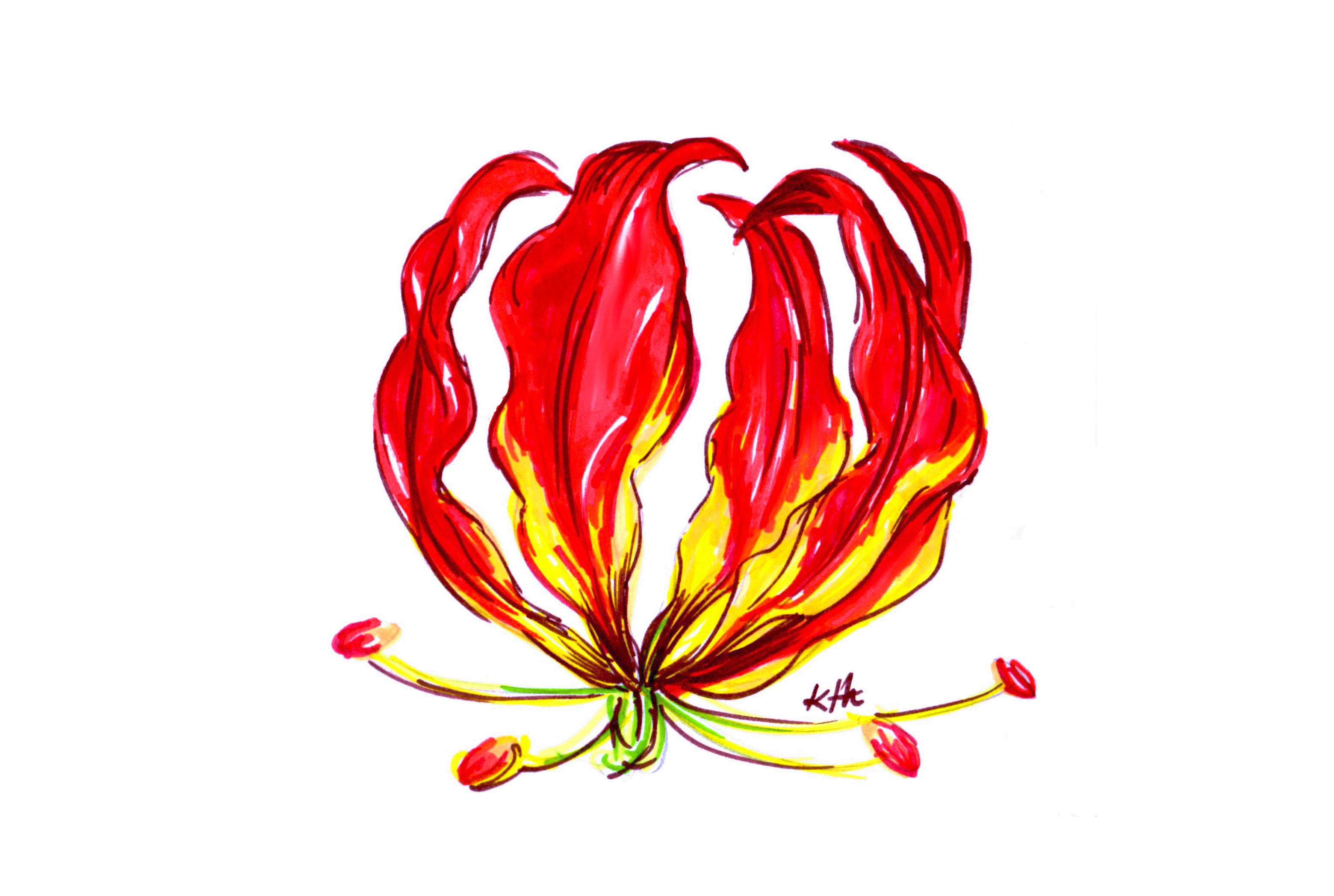
Illustration Keera Ratnam
Twenty-five years ago today, the Tamil nation’s day of remembrance – Maaveerar Naal, was first commemorated at an event in the Vanni. Today, the commemoration of the nation’s fallen heroes has spread across the world, taken by those who were forced to flee their homeland in the North-East. This year also marks a significant anniversary of remembrance in global history, the hundredth anniversary of the start of the first world war. Over 16 million people died during four years of intense warfare, which led to a further world war and millions more deaths. Silence, a candle and a flower – a gloriosa lily and a poppy, were used in an act of remembrance that is understood across nations and across generations. The legacy of those who gave their all for their nation binds a people beyond political differences. It reverberates through history and is honoured and revered as the ultimate sacrifice.
This year also marks the 5th year since the military defeat of the LTTE, which left tens of thousands of Tamils massacred by Sri Lanka’s military, the de facto state of Tamil Eelam destroyed, and the entire Tamil population at the mercy of the state. The honour of sacrifice is entwined with the agony of loss. Five years on, the fate of many of those who took up arms to defend the Tamil nation from destruction, remains unknown and for their loved ones, grief is yet to begin. Yet, the loss did not leave the Tamil nation incapacitated. The past five years has seen the struggle against oppression taken up on an international level, with a determination and resilience born from the legacy of the Maaveerar.
It is this resolve that both fuels the Tamil nation’s ongoing resistance against the state and in turn, makes the state determined to quash any act of remembrance. Yet, each year since 2009, the courage and defiance shown in marking this day is profound. Even as the state continues to tighten its grip on the North-East, particularly in the run up to November 27, Tamils approach remembrance day with wilful audacity and brazen defiance. This year Tamil representatives planted trees, openly stating that this was done in remembrance of Maaveerar, youths have been arrested for putting up posters, and the threat of students holding an event, has led to the University of Jaffna being forced shut.
Yet, the struggle for liberation goes on with renewed vigour. The coming year again places Sri Lanka under scrutiny, as the international community awaits the findings of a UN inquiry into mass atrocities at the end of the armed conflict. Ordinary Tamil people risked their lives to provide evidence to the inquiry, amid reports of arrests and threats. Sri Lanka however, refuses to cooperate, not only rejecting calls for accountability, but deliberately obstructing the work done by the UN. Despite Sri Lanka’s posturing, including publicly accusing the west of conspiring to divide the country, it is an engaged actor in the international community, keen to host events like CHOGM and eager to take part in UN mechanisms where it believes it will be safe from criticism. UN human rights chief Zeid Ra’ad al-Hussein’s damning statement on the government put into question its integrity. The UN inquiry into Sri Lanka, has been treated with disdain by the government. Sri Lanka’s continuing defiance and rejection of international efforts to bring about accountability must be met with robust responses by the international community. Concrete punitive measures, such as the removal of EU trade concessions, recommended by the UK Foreign Affairs Committee today, and targeted sanctions against members of the government and military and those with close ties to them, must be used for their intended purposes, namely to force Sri Lanka to abide by international law.
As the Tamil nation looks beyond March 2015 and to the next fives years, the international recognition of mass atrocities committed by the state against the Tamil people, must lead the way to justice and reparations. It is only then, that the anguish of loss can begin to heal. At the same time, the need to safeguard the nation from destruction remains unmet five years after the government declared peace. The Tamil homeland remains under military occupation, Tamils continue to face the threat of rape, disappearance, torture and death by the state and the Tamil nation lacks any meaningful autonomy. It is precisely this which led young Tamil men and women to take up arms three decades ago. It is their memory – that of the Maaveerar – that the Tamil nation today reflects on, and their legacy that a new generation of young women and men struggling for the nation’s freedom draw on to renew their resolve.